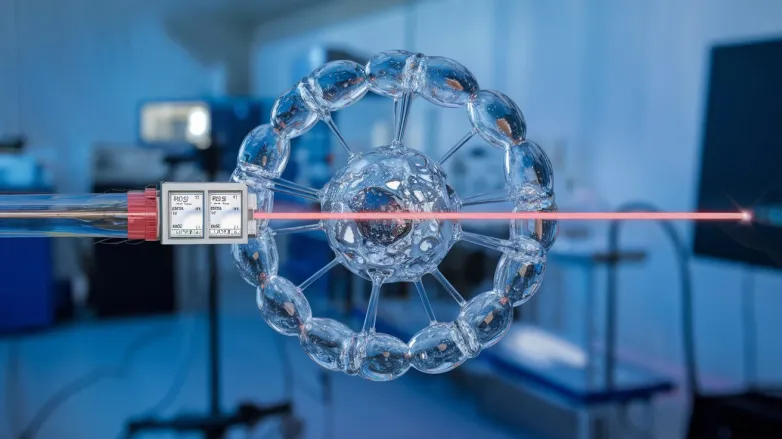New Doping Technique Enhances Spintronic Perovskite Lasers
- Revolutionizing laser tech, researchers unlock spin-polarized lasing in perovskite microcrystals, enhancing performance and lifespan with a groundbreaking ion doping strategy!

Researchers from the Chinese Academy of Sciences and Beijing Normal University have developed a new ion doping strategy that enhances the spintronic performance of hybrid organic-inorganic perovskites, paving the way for spin-polarized lasers. These lasers outperform conventional ones but have faced challenges due to rapid carrier spin relaxation in perovskites. By suppressing the electron-hole exchange interaction responsible for this relaxation, the team successfully demonstrated spin-polarized lasing in doped perovskite microcrystals.
The introduction of a magnetic species through ion doping created a new energy level, leading to longer carrier spin lifetimes. This advancement not only facilitates improved spin-polarized lasing but also allows for magnetic field control over the process. The findings offer significant insights for designing perovskites in spintronic devices, potentially revolutionizing laser technology.
How does ion doping improve spin-polarized laser performance in perovskite materials?
How Ion Doping Improves Spin-Polarized Laser Performance in Perovskite Materials
Mechanism of Ion Doping:
- Ion doping involves introducing specific ions into the perovskite lattice, which alters the electronic structure and properties of the material.
- The presence of magnetic ions creates localized energy states that can influence the spin dynamics of charge carriers (electrons and holes) within the material.
Suppression of Carrier Spin Relaxation:
- Ion doping helps inhibit the electron-hole exchange interaction that leads to rapid spin relaxation, which is a critical barrier for achieving efficient spin-polarized lasing.
- By creating additional pathways for spin interactions, the doped perovskite can maintain spin coherence over longer time scales, contributing to enhanced laser performance.
Extended Spin Lifetimes:
- The new energy levels introduced by the magnetic impurities not only extend the lifetimes of the spin-polarized states but also allow for better retention of spin information during lasing.
- This improvement is vital for applications where maintaining spin polarization is essential, such as in quantum computing and advanced photonic devices.
Magnetic Field Control:
- The incorporation of magnetic ions enables the manipulation of spin-polarized states using external magnetic fields, allowing for greater control over the lasing process.
- This magnetic control can lead to innovative applications in data storage, spin-based electronics, and optoelectronics.
Material Stability and Functionality:
- Ion doping can enhance the thermal and structural stability of perovskite materials, making them more suitable for real-world applications.
- Increased stability implies that the spin-polarized lasers can operate effectively under various environmental conditions, promoting wider adoption in technology.
Scalability and Economic Implications:
- The approach of ion doping can potentially be scaled up for industrial manufacturing, contributing to cost-effective production of high-performance spin-polarized lasers.
- These lasers can serve various sectors, including telecommunications, medical devices, and automotive industries, where efficient light sources are crucial.
Insights for Future Research:
- The findings shed light on new pathways for engineering perovskite materials tailored for specific spintronic applications.
- Ongoing research may uncover additional dopants or combinations that further optimize performance, opening up new avenues for innovation in the field.
Broader Impacts on Spintronics:
- Enhancing spin-polarized laser performance aligns with the broader goals of spintronics to develop devices that utilize both charge and spin of electrons for improved efficiency and functionality.
- The advancements in this area signify potential shifts in technology paradigms, leading to faster, more efficient devices across numerous applications.
Also read

